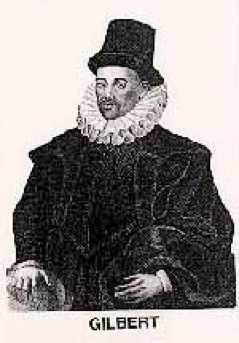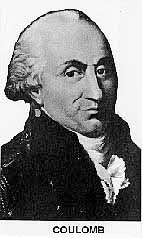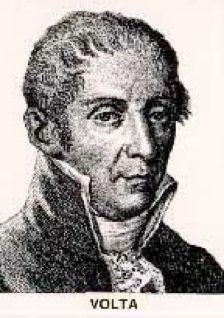Click HERE to go to home page -- (page 1)
Nikola Tesla--(Page 14)
A Short Chronology of the History of Electricity & Radio.
Page 1
Please do not believe that any 'one-man' invented our system of electricity, nor did any 'one-man' invent radio. The story of the rise of electricity is long and interesting, and should not be contaminated with biased historical interpretations that include entrepreneurial experiments made by those who followed the 'Great Discoverers.' The long road leading to a better understanding of electricity started with William Gilbert who made the first organized study of magnets.

Gilbert was the royal physician to Queen Elizabeth I of England, 1600 AD. She directed him to study magnets in order to improve the accuracy of compasses used to navigate ships. In doing so, and without understanding the ramifications, he laid the foundations of magnetic science, a key element that eventually led to the generation of electricity. The "Gilbert" is the unit of magnetomotive force.
__________________________________________________________
Scientific progress moved slowly in those early days. In 1776, people were still interested in learning how to improve magnetic compasses. Charles Coulomb, in his researches, made a significant improvement in the manufacture of compass needles.

During this period there was also much scientific interest in static electricity. Coulomb did much research in this area and established its fundamental laws. The "Coulomb" is the unit of electric charge.
__________________________________________________________
Then in 1800, Alessandro Volta made the first electrochemical cell and battery capable of producing electric current.

His inspiration came from Luigi Galvani, a physician who had been conducting experiments with frog legs hung on brass hooks. The legs convulsed when he touched a piece of iron to the framework.
Galvani proposed a theory of "animal electricity" as the reason the frog legs had muscle spasms. Volta disproved this theory, stating accurately that the frog legs convulsed as a result of their being in contact with two different metals. His metal theory intrigued him, so he conducted numerous experiments. Eventually Volta created a chemical cell capable of producing a continuous electric current. He assembled zinc disks alternately with silver disks, separated by pasteboard soaked in brine solution and called it an "electric pile." The "Volt" is the unit of electric potential.
_______________________________________________________
Click HERE to continue.
Click HERE to go back one page.
Click HERE to send me a message.